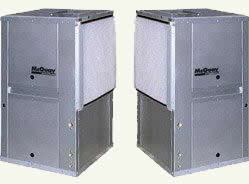Additional information is available at:
Geothermal Heating 2
Geothermal Heating & Cooling For Your Home
One thing is for sure energy prices are going to continue to rise. If you are considering replacing your heating and cooling systems or if you are building a new home then you should consider the advantages of using geothermal!
One of the most energy efficient methods of heating and cooling your home is to use a geothermal heat exchanger.
Some geothermal systems even provide hot water for your home.
Geothermal heating and cooling is not science fiction, it is a proven method of supplying heating and cooling and its acceptance, and installation is growing daily. Savings on yearly energy bills can be as much as 60 percent. In the US, the federal government and many states are providing tax incentives and credits if you install a geothermal HVAC system. Other countries including Canada also have incentive programs. Check out your local electrical utility or government website.
How does a geothermal HVAC system work?
It uses technologies that have been around for many years - pumps and heat exchangers, as shown in Figure 1. A well is drilled on your property. The water from the well is pumped through a heat exchanger in your home where a portion of the latent heat in that water is removed and used to heat your home. In the summer, as the water temperature is cooler than the outside air the system provides air conditioning to your home. In climates where temperatures fall below 0 degrees, supplemental heating using gas, electricity, or fuel oil may be incorporated into the system.
Electricity is used to power the pump and the circulation fans. There is no cost to the homeowner for the actual heat. No gas or fuel oil is consumed.

Figure 1 - Geothermal heat pump
A geothermal HVAC system is not only cost beneficial, it is very environmentally friendly and it conserves our precious fossil fuels.
